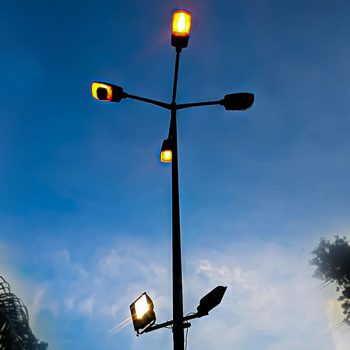
Goodbye 3G, hello 5G. But will it be a bonanza or a booby prize?
- Posted by SolutionsTeam
- On April 22, 2022
- 0 Comments
With 2G and 3G networks being switched off to make way for 5G, service providers and device manufacturers have some great opportunities. But it’s not a simple transition. Opportunities will open up for smaller, more nimble device manufacturers to grab a slice of the pie which previously had been locked up and jealously guarded by large vendors with proprietary solutions. New applications will abound, providing new business for service providers and system integrators. But like technology itself, to reap the full benefits of 5G requires a fundamental shift in thinking.
An overview of 5G
The International Telecommunications Union (ITU) has defined three main focus areas for the enhanced capabilities of 5G:
- eMBB (enhanced Mobile Broadband). Faster connections, higher throughput, and more capacity. Possible speeds are up to 10 to 100 times faster than 4G, enabling a better and richer streaming experience for video applications of all kinds, not just movies.
- URLLC (Ultra Reliable Low Latency Communications). Using the network for mission critical applications that require uninterrupted and robust data exchange. Short-packet data transmission will be used to meet both reliability and latency requirements leading to new applications such as connected cars.
- mMTC (massive Machine Type Communications). Will allow a large number of devices to be connected. For example, 5G technology is expected to connect some of the 50 billion connected IoT devices all the way from drones, cars, trash cans, smart meters, haulage trucks, to machines in farms and factories.
5G networks operate on up to three frequency bands – low, medium, and high. The ability to operate in a wide variety of frequency bands gives 5G networks enormous flexibility. At high frequencies, they can operate at high speeds but within a short range. At lower frequencies, 5G networks have a longer range but operate at a lower speed. In the high frequency bands 5G networks have a shorter range which results in smaller cell coverage area. Therefore, more cells are needed to provide coverage over a geographic area resulting in more devices. Managing more devices puts additional burden on the management system.
It is important to note that, architecturally, 5G is not limited to supporting just voice and data. It can also support other applications leading to additional services.
Technology shifts – disaggregation and virtualization
Current RAN (Radio Access Network) technology consists of an integrated hardware and software platform which is proprietary to each and every network and device manufacturer.
While much of the network has already benefited from a wave of disaggregation and virtualization in support of 4G/LTE, the RAN is the last piece of the network to be disaggregated. Three important elements of a fully disaggregated RAN have begun to emerge: the Centralized Unit (CU), the Distributed Unit (DU), and the Radio Unit (RU). This disaggregation has made possible a multi-vendor solution, facilitated by open interface specifications such as O-RAN from the O-RAN Alliance. This multi-vendor approach allows operators to mix and match best-of-breed components from multiple vendors and also helps them to drive down the costs.
Another key shift that is currently underway is the shift towards virtualization, containerization and cloudification. This makes the operational support systems that are required to roll out new services very versatile and capable of supporting advanced services and applications. Lastly, the operators are embarking on software development either inhouse or using third party partners to unleash the power of automation which will enable them to deploy new services and applications sooner.

New opportunities for telecom
These technology shifts will enable 5G networks to support a host of new applications and services. For service providers, there is a shift from offering just voice and data to a richer set of applications such as edge-based services that support autonomous driving, augmented reality, or any IoT application that requires low latency cloud processing. Enterprises are beginning to leverage 5G networks’ speed, signal prioritization, and security to roll out private LTE/5G networks to drive automation in their factories and warehouses etc.
Summary
The extra speed, throughput, capacity and reduced latency of 5G will enable a whole host of new applications far removed from the traditional voice and data of current networks. An explosion of video, mission-critical applications, and applications involving many of today’s 50 billion connected IoT devices will become commonplace. The disaggregation of hardware and software, facilitated by open interfaces will create a market for vendors supplying individual components rather than complete solutions. This will give service providers more choice, but also more headaches having to ensure that components from different suppliers work together and adhere to standards such as O-RAN. The plethora of smaller devices will also mandate the need for an overarching management system with a unified view across the whole solution.



0 Comments